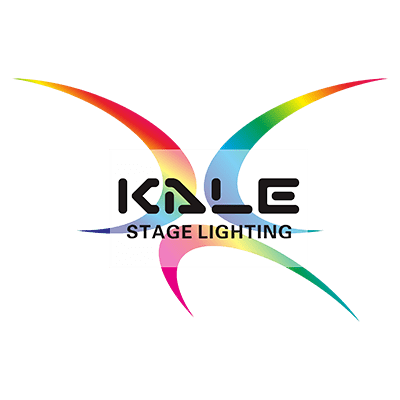There are a variety of stages in the theater, including an ordinary mirror-frame stage, extended stage, island stage, and a stage called a black box. Because the stage forms are different, the lighting configuration requirements are also not exactly. For the sake of convenience, I will only talk about the ordinary mirror-framed stage. This kind of stage has been more in the past or in the reconstruction and newly built theaters. Therefore, it is extremely necessary and necessary to talk about the lighting configuration of this stage.
Stage (refers to the framed stage, the following text is the same), the lighting requirements will be different due to different repertoires. Therefore, we must know what kind of repertoire is the main performance at this stage before we use the lamps so that the configuration of the lamps will have clearer goals and intentions. If some stage is positioned to perform traditional operas and ballets, the configuration of lamps must be configured according to the requirements of operas and ballets. If special programs such as large-scale singing and dancing, miscellaneous, and other special programs are the main ones, in addition to the basic requirements of the lighting configuration, special lighting positions and lighting configurations should be added according to the specific program requirements, which is more difficult to describe here. Therefore, I will only talk about the basic lighting configuration of the theater stage. According to this configuration, it can meet the general requirements of local dramas such as opera, dance drama, ballet, drama, and Peking opera.
Before configuring lamps, you should first understand the types of lamps and their main functions and uses. Here I will briefly introduce the performance of some lamps and lanterns for the choice of lighting configuration time.

The performance of some lamps and lanterns
1. Spotlight-the spotlight used on the stage refers to the use of a plano-convex condenser in front of the lamp. This kind of lamp can adjust the size of the spot, the light beam out is relatively concentrated, and the diffused light next to it is relatively small, and the power is 0.5w There are many kinds of to 5KW, the focal length is divided into long, medium and short, the distance of the viewing distance can be selected according to the needs
2. Ribbed lights-or soft light, but in the TV industry, this kind of light is called astigmatic light. On the stage, in order to distinguish the above-mentioned plano-convex spotlight from being diffuse and soft, it has a large diffusion area. Sometimes to control the diffused light, a title page is added in front of the mirror to block it. Its characteristic is that the light area is large, unlike the spotlight. There are obvious light spots, the shooting distance is relatively short, and the power is 1KW, 2KW, etc.
3. Return light-this kind of light has no lens in front, and the light is completely emitted by the larger reflector at the back. With the same 2KW bulb, its brightness is brighter than the spotlight, so it is necessary to show a strong light source and brightness on-stage use. The effect is better than other lamps. The characteristic is that the beam is strong, but the focus point should be paid attention to when dimming. It is not advisable to adjust the focus point on the colored paper or curtain, which will easily cause burning. In addition, black centers often appear during dimming. , In order to avoid the black center, a ring-shaped baffle is added to the center of the front end of the lamp, which emits a large light spot and is not easy to close. There is a new kind of coating on the reflector to make the outside line transmit backward to reduce the temperature in front of the lamp. The effect is very good. The name is a cold light super spotlight. The actual structure of the lamp is the same as that of the return light.
4. Imaging light-or shaped light, ellipsoid spotlight. There are many beam angles that can be selected and applied according to needs. The main feature is that it can cut the spot into various shapes such as squares, diamonds, triangles, etc., or project various patterns and patterns, and the power is also 1KW, 2KW, etc. Optional configuration.
5. Jane lamp-also known as PAR lamp, or beam lamp, its structure is to install a mirror bulb in the cylinder and also use a reflective bowl with bromine tungsten bulbs. The main feature is to emit a relatively fixed beam, and the beam angle is wide and narrow. , The spot size cannot be adjusted.
6. Sky row lamp-high-power astigmatism lamp, used to illuminate the sky curtain from top to bottom, which requires bright and balanced light, and a large illuminated area.
7. Floor light bar-high-power astigmatism light used placed on the stage, the lower part of the sky curtain is facing upwards, and the light from the sky bar light is connected, evenly up and down.
8. Astigmatism strip light-long strip, divided into multiple grids, generally can be divided into three or four colors, each grid uses incandescent bulbs with a power of about 200W, all colors are required to be self-connected and even to illuminate a large area of the screen or painting The curtain can also be used as large-area balanced paving. Various color lights can also be used at the same time to call out different color beams.
9. General astigmatism lamps-such as iodine tungsten lamps and ordinary floodlights, is mainly used to illuminate a certain area evenly, or for some scenery purposes.
The lamps and lanterns introduced above are the basic lamps and lanterns used on the general stage, but other kinds of lamps should be equipped due to different repertoire forms. For example, in addition to basic lamps and lanterns, downlights, computer lamps, hose lamps, board lamps, various effect lamps, and even smokers, dry ice machines, strobe lights, lasers, and projection slides are used in the singing and dancing party, as well as supporting use. For rear projection, to reduce light source spots, special seamless plastic screens, etc., I will not give examples one by one here.

Stage lighting configuration
The stage lighting configuration is divided into two parts, the outside of the platform and the inside of the platform, with the mouth as the boundary.
First section
The general faceted light, slap, bag box (building), and long-distance chasing room outside the platform.
1. According to the scale of the theater stage, there is one surface light, two surface lights, or even three surface lights. The configuration of the surface light should be based on different distances, and the power of the spotlights and imaging lights with different collection distances should be above 2kw. The first surface light is closer to the proscenium, and some 2kw rib lights and return lights can also be added. Follow spot lamps with suitable focal length and power should be added to the left, middle, and right positions of one surface light and two surface lights, and the brightness and color change can be individually controlled by the follower.
2. Slaps are set symmetrically on the left and right sides of the proscenium. According to the scale of the theater stage, each side of the slap can be set up with one or two lights, mainly spotlights, and a small amount of imaging lights, rib lights, because slaps *audience hall The side walls are very close. When using rib lights, the diffused light often illuminates the nearby walls very brightly and affects the atmosphere of some scenes, so it is better than useless. A set of follow-up lights should be set in each slap on the left and right for arbitrary control by the follower.
3. The footlight is usually outside the platform * by the orchestra pool, with a footlight slot, built-in four-color astigmatic light, and color separation control, and its length is slightly less than the width of the platform.
4. Long-distance chasing room, generally one on the left and right of the back of the auditorium, equipped with gas discharge lamps such as xenon lamps, all control is operated by the chasing staff if there is no special chasing room, it is often on the left and right of the building Follow spotlights are set in the rear area on both sides.
5. The box (building) light, according to the theater situation, you can set up a number of spotlights at the left, middle, and right of the box (building), if conditions do not permit, you can also not set it.

Second section
The proscenium is generally divided into fake proscenium side pieces (left and right pillars), fake proscenium top pieces (one top suspension bridge), two tops, three tops, four tops, five tops, sky rows, ground rows, left and right flow, left and right sides Light (left and right hanging cages), one hanging cage, two hanging cages, three hanging cages, four hanging cages, five hanging cages, etc. Depending on the size of the stage, some facilities are less. Top light It is necessary to determine the appropriate course according to the depth of the stage and the distribution of the scenic spots. The left and right side lights (hanging cages) should also be set according to the size of the stage and even the investment. Some stages have backstage or anti-projection requirements behind the sky. This should also be considered according to the stage scale, investment, and the main performance of the repertoire. If this is possible, the configuration of the lighting should of course also be planned. For supporting us.
- 1. False proscenium side piece (left and right pillar light) is equipped with a spotlight, rib light, follow the light, and a small number of imaging lights, except for special, generally symmetrical.
- 2. The fake proscenium top film (a suspension bridge) is equipped with astigmatism strip lights, spotlights, rib lights, imaging lights, and follow-up lights.
- 3. Two top lights are equipped with astigmatism strip lights, spotlights, rib lights, and downlights.
- 4. Three top lights are equipped with an astigmatism strip light, spotlight, rib light, backlight, and downlight.
- 5. Four-top light configuration astigmatism strip light, spotlight, rib light, backlight, downlight.
- 6. Five top light configuration astigmatism strip light, spotlight, rib light, backlight, downlight.
- 7. The sky row is equipped with sky row lights.
- 8. The ground row is equipped with ground row lights.
- 9. Mobile configuration mobile lampstands, spotlights, rib lights, flat lights, etc.
- 10. The left and right side lights (flight cage) are equipped with spotlights, rib lights, imaging lights, and return lights.
Some theater stage ceiling lights are not equipped with astigmatism strip lights, but instead, use rows of iodine-tungsten astigmatism lights.
The way of configuring lamps can be changed according to needs, but the performance of various lamps should be considered. Make it give full play to its functions for my use, to achieve perfection.


